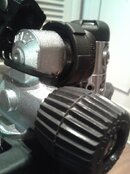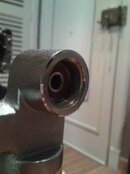Divescape
Contributor
I have dived both. One a Titan yoke the other a MK25 Din which i converted to DIN. Why i did was simple. i do not like to rely on other peoples O rings. i was loosing a couple of o-rings a month into rental tanks where i took one look at the o-ring on the valve and replaced it. Ok this is not at all a significant cost, but i know the state of the o-ring on my reg and am not reliant on a factor out of my control. Just my 2c as DIN is widely available for us.





 )
)